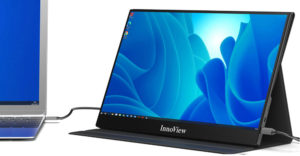
The concept of mobile connectivity in today’s multi-device world is changing. Connectivity means more than connecting our laptop computers to WiFi or 3G carrier networks wherever we go. Today people work on more than one computer. Increasingly, workers and consumers alike rely on a growing collection of mobile devices such as smartphones and tablet PCs.
Being able to get and send email on cellphones or tablets is no longer enough connectivity. We need more synchronization among our gadgets. Having an isolated to-do task list and calendar events on our mobile devices does not meet our connectivity needs.
Rather, mobile device users need strategies for easily syncing data they enter on their desktops and laptop computers with applications on their tablets and cellphones. Achieving this degree of connectivity is no easy task. It is largely a method of trial and error. Still, this type of connectivity is possible.
My work and play activities turned me into a victim of technology. When I left my home office for a day or more, I would travel with a netbook computer, plus an Asus Transformer (tablet computer with attachable keyboard/docking station). Sometimes I included a larger, more powerful notebook computer.
Of course, my HTC Android Smartphone hung on my belt. The phone and tablet and netbook were great for consuming media but not producing it. For a while, I kept critical data on a large-capacity USB drive to easily share its data among my computers. But I had to couple the tablet to its keyboard base to access the USB port. And the phone has no USB ports, so it was left out of the exchange.
I found some very workable solutions that let me get more efficient use from today’s mobile and stationary technology without having to leave some data or devices out of the mix. I solved the data interconnectivity issue with a few well-chosen Android apps for the phone and tablet. I tied everything together with a few more Google Chrome Web browser apps for my computers.
Taming the Shrew of Data
My connectivity issues worsened when I added the smartphone and tablet to my regular working routine. All of my bulk computer data was spread out into too many places. For example, the netbook and laptops accessed Ubuntu’s Cloud One Service. I also had files stored via Google Docs in that provider’s cloud storage system.
But my Asus Transformer Tablet automatically connected to that vendor’s MyCloud service. Getting to any of those places was a challenge on the tiny smarthone screen. It was an inconvenience at best from my desktop computers.
And I still had the problem of sharing calendar details, to-do lists, interview and meeting notes from the Android devices to my Linux-driven laptops and desktop computers. The trick I discovered to curb my gluttonous appetite for files and data was to change how I handled data I needed to share among my devices.
For example, where I stored music and photos and archived files was less critical. I could use my existing forays into one or more clouds and hard drives. The solution keyed into how selectively I chose apps that run on Android that would shake hands with the Web browsers I used on my more traditional computer gear.
The Web We Weave
I needed a better Web platform to provide a conduit for data exchange and syncing among my growing collection of computers and mobile devices. I had used Mozilla’s Firefox browser for years. But its extensive library of extensions no longer met my mobile computing needs. The Android Firefox browser was clueless. Google does offer an Android Chrome browser, but only a small number of Android phones can use it.
I began using Google’s Chrome browser on my dekstop and laptop computers when I discovered its huge collection of add-on tools. In most cases they duplicated or exceeded my needs from Firefox. But they also better addressed my mobile needs.
App by app, I found free and low-cost Android solutions that talked directly to extensions and add-ons available for the Google Chrome browser. Caution: All of the Android apps do not sync with other devices. Some of them export/import. But that becomes a mundane, awkward solution quickly.
However, several Android apps let me enter data on my cellphone and have it almost instantly sync to my tablet and vice-versa. Google Chrome then updates the content in a companion Chrome app. So I can achieve two-way syncing regardless of where I enter the details — desktop or laptop computers, netbook, tablet or cellphone.
The Google Connection
Google’s Web browser, through its built-in free cloud service, makes the connectivity process work. Alas, Firefox’s developer, Mozilla, does not have such an offering. And the free basic individual cloud services Canonical (the commercial developer of Ubuntu Linux) provides and the Asus cloud solution are not as universal if you do not use their OS (for Canonical) or hardware (for Asus).
I use a toolbox of five Google Chrome apps to exchange data among my desktop and laptop computers. This part of the connectivity equation is not linked to Linux OSes per se. So this portion of the connectivity solution works with Microsoft Windows and Apple OS X computers as well. That may or may not hold up with apps for the iPad or Windows tablets and non-Android smartphones. They do, however, work for the Kindle Fire tablet (but not dedicated e-book readers).
These Chrome apps are available directly from the Chrome Web Store via the Google Chrome browser. The beauty of the Google Chrome browser is that it updates settings and app data and even installed apps on every computer you use as long as you are logged into your Google account.
- xMarks Bookmarks Synchronizer: I found this works better than Google Chrome’s bookmark syncing, which duplicates by merging rather. be sure to uncheck the bookmarks option in the browser’s syncing options.
- Too Many Tabs for Chrome: This lets you pick up where you left off when using multiple computers. It saves your open tabs.
- Chrome Notepad: This app gives you a never-ending single page to keep notes or information you check often.
- Google Calendar and Tasks: Not only does it sync your Google calendar and task list on all of your computers, but it also syncs with Android apps on your phone and tablet.
Syncing Simplicity
Google Browser tools further expand your ability to sync data between your computers, tablets and phones. One tool set is a collection of browser tie-ins to the Google cloud called “Google Shortcuts.” They provide instant access to documents I store as Google Docs. You can select the combination of free services that suits your needs.
The shortcuts I use from the browser toolbar are: Notebooks, Google Docs, Reader and Bookmarks. These are one click away whether I am on the phone or tablet connected to Google.com with any mobile browser or any Internet-connected desktop or laptop computer.
Two Google Chrome extensions sync my phone with the desktop and laptop/netbook browsers. The first one is the Google Chrome to Phone Extension. This lets me send links and other information from Chrome to my Android device. I first had to install the Chrome to Phone app in in the Google Chrome browsers. I also installed the Chrome to Phone app on my tablet and phone. The app is available from the Android Marketplace.
The second killer syncing tool is the Mighty Text app. It also requires companion installations on the mobile devices and Chrome browser extension. It pops up an alert on the computer when my cellphone rings or text message arrives on the phone or tablet. The beauty of Mighty Text is that I can send and receive text messages on the computer relayed through the phone’s SMS feature. If nothing else, having access to a real keyboard while texting is convenient.
Two-Way Play
I found two Android phone/tablet apps that provide two-way data flow between phone, tablet and PCs. This solved my nagging problem of having to duplicate entries manually on all my devices and computers. Now I can use one or both of these apps for all of my gear.
The Android app SpringPad uses the computer’s browser to connect to the SpringPad server. The Android app handles the data on phone/tablet and then syncs with the SpringPad servers. It accepts different types of information, including notes and tasks, bookmarks, recipes, checklists, shopping lists and packing lists. It also saves audio and video clips. This system works with iPhone and iPad apps as well as the Firefox and Chrome browsers. It teams up with the browser extension called “SpringIt.”
Astrid Tasks is an Android app that syncs with Google Tasks as well as Google Calendar in a two-way conduit. It solves the problem of having a calendar on the mobile devices and separate calendars on other computers. Ditto for the to-do list manager.
A final syncing solution comes with the ColorNote Notepad app. It does not sync data with my computers. But it shares my notes and lists with my tablet and cell phone.





















































